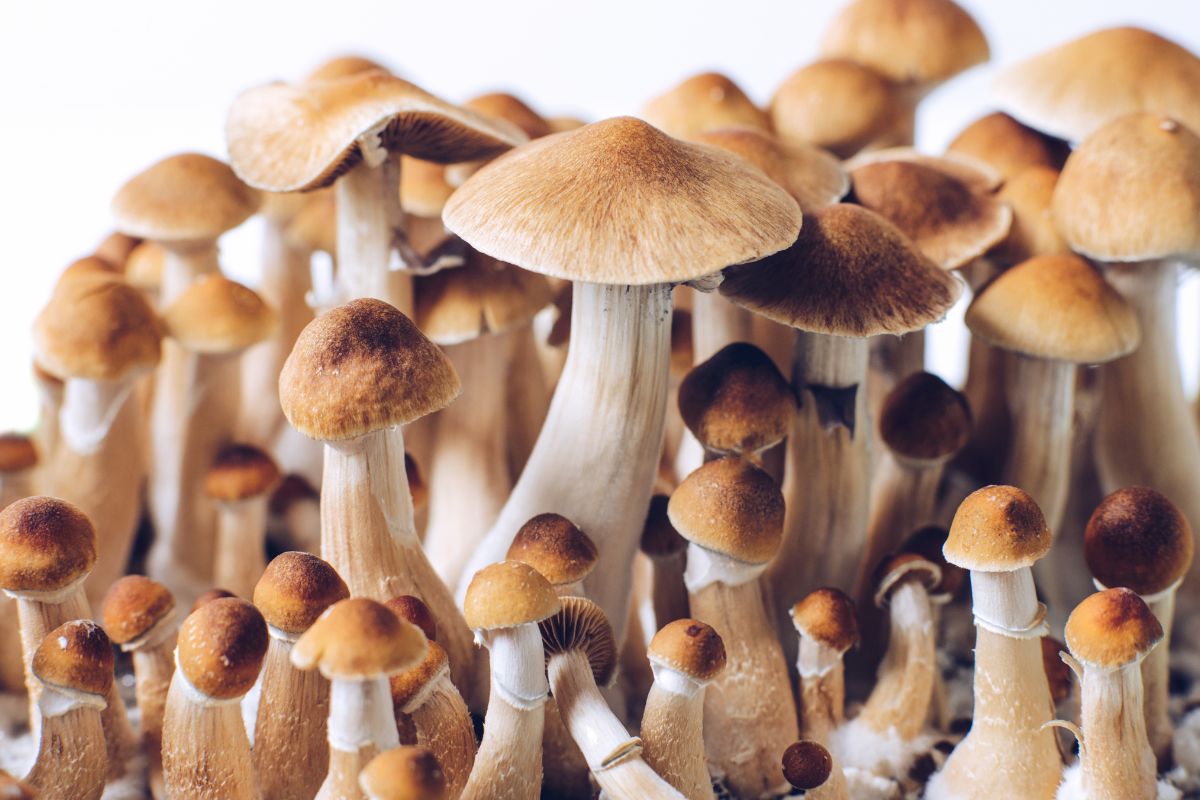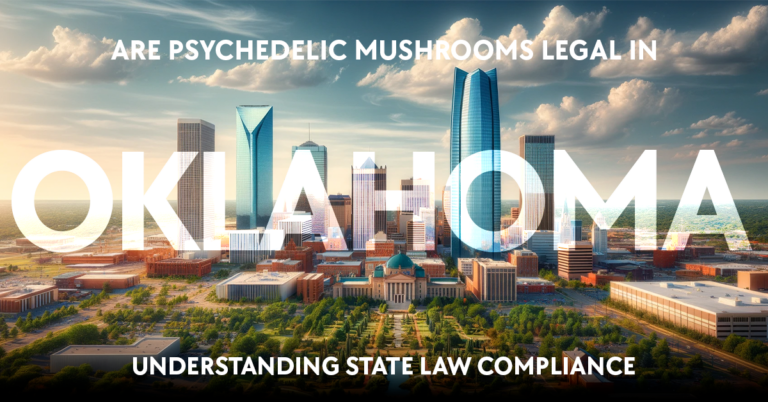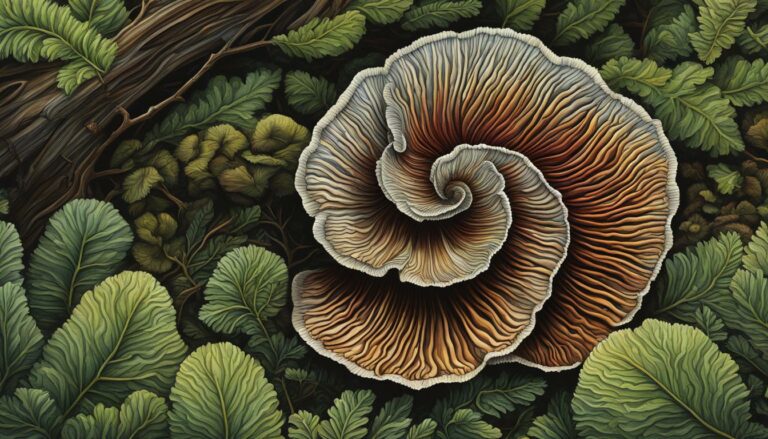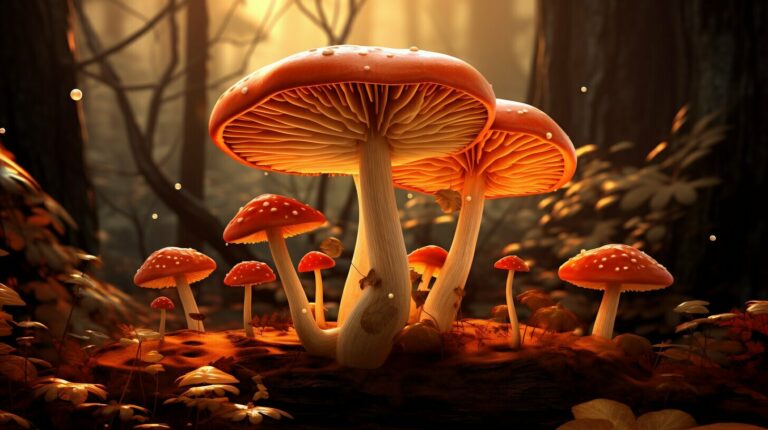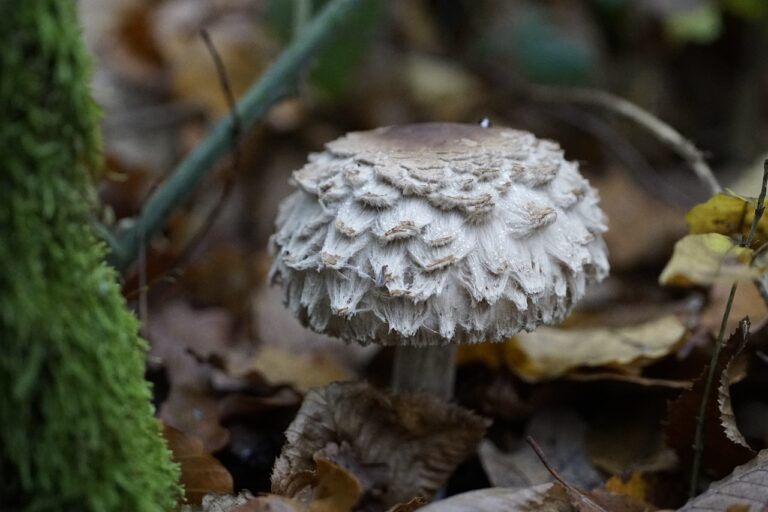Psilocybe mushrooms are a group of fungi renowned for their hallucinogenic properties, which are primarily caused by the presence of two active compounds, psilocybin and psilocin. These species can be found in various regions around the world, including North and Central America, Europe, and parts of Asia. Due to their psychoactive effects, they have been utilized in religious and spiritual practices for thousands of years, and they continue to be the subject of modern research in fields such as psychology and neuroscience.
The genus Psilocybe boasts an impressive number of species, with hundreds of names reported in the mycobiota worldwide. Scientists have conducted extensive research to determine the levels of psilocybin and psilocin in different species, and to expand our understanding of their chemical profiles and potential therapeutic uses. However, it is important to remember that the collection and consumption of psilocybe mushrooms are strictly regulated due to their hallucinogenic properties and potential risks to human health.
In this article, we will explore the diverse world of psilocybe species, their habitat distributions, and their unique characteristics. We will also discuss the broader implications of these fungi in various areas such as culture, religion, and scientific research. As we delve into the complexities of this fascinating genus, we aim to provide a comprehensive understanding of these remarkable mushrooms and their significant role in human history and discovery.
Overview of Psilocybe Species
Table of Contents
| Psilocybe Mushroom Species | Common Name | Appearance | Habitat & Distribution | Psychoactive Compounds |
|---|---|---|---|---|
| Psilocybe semilanceata | Liberty Cap | Small, conical cap with a distinct nipple-like protrusion. | Found in grassy meadows and pastures, often in cooler climates. Common in Europe. | Psilocybin, Psilocin |
| Psilocybe cubensis | Cubensis | Large, brownish-yellow cap with a prominent central nipple. | Typically found in tropical and subtropical regions, often in cow dung. Widespread. | Psilocybin, Psilocin |
| Psilocybe azurescens | Flying Saucer | Large, caramel-brown cap with a wavy edge. | Native to the Pacific Northwest of the United States, often near coastal areas. | Psilocybin, Psilocin |
| Psilocybe cyanescens | Wavy Cap | Medium to large cap with a conical shape and a wavy edge. | Native to parts of Europe and the Pacific Northwest of North America. | Psilocybin, Psilocin |
| Psilocybe baeocystis | Baeocystis | Medium-sized, conical cap with a distinct nipple-like protrusion. | Found in the Pacific Northwest of North America, often in wood chips. | Psilocybin, Psilocin |
| Psilocybe tampanensis | Tampanensis | Small to medium-sized cap with a smooth texture. | Originally discovered in Florida, USA, but now cultivated worldwide. | Psilocybin, Psilocin |
| Psilocybe caerulescens | Caerulescens | Medium-sized cap with a conical shape and a distinct nipple. | Native to parts of Mexico and Central America, often in highland regions. | Psilocybin, Psilocin |
The Psilocybe genus encompasses a diverse group of mushroom species, many of which are well-known for their psychoactive properties. These mushrooms, commonly referred to as psilocybin mushrooms, have been used for centuries for their hallucinogenic effects, primarily stemming from the presence of psilocybin and psilocin compounds. There are over 150 known species of Psilocybe, widely distributed across various regions worldwide, especially in Mexico where their usage has a long cultural history.
Psilocybe mushrooms can be grouped broadly into three categories based on their geographical distribution and characteristic features. The hallucinogenic Mexican species are perhaps the most well-known, followed by those originating from the Pacific Northwest region of North America and the European species.
The key identifying feature of hallucinogenic Psilocybe mushrooms is their natural bluing reaction when bruised or damaged. This color change is due to the presence of psilocybin, which oxidizes upon exposure to air. Although this feature can be helpful in distinguishing psilocybin-containing mushrooms from non-hallucinogenic varieties, accurate identification is crucial as misidentification can lead to serious health consequences from toxic species.
Psilocybin and psilocin, the primary psychoactive compounds in these mushrooms, are the subject of ongoing scientific research for their potential therapeutic applications. Notably, recent studies have shown promising results in the treatment of conditions such as anxiety, depression, and even substance use disorders. It is, however, essential to remember that the use of psilocybin mushrooms outside a controlled, clinical setting remains illegal in many parts of the world.
In conclusion, the Psilocybe genus represents a fascinating group of mushroom species with a rich cultural and potential medicinal significance. As research on the therapeutic potential of psilocybin and psilocin continues to grow, so too does our understanding of the various Psilocybe species and their respective roles in our natural world.
The above section touches on the following: [psilocybe, species, psilocybin mushrooms, mushroom species].
Psilocybe Genus Description
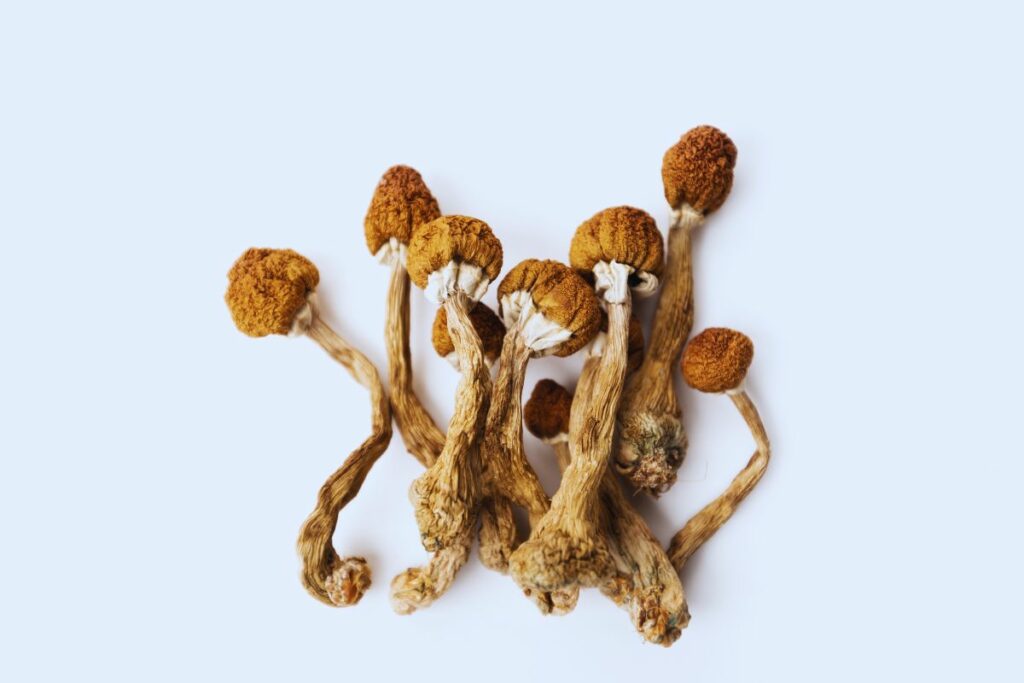
The Psilocybe genus is a group of fungi primarily known for their production of the psychedelic compounds psilocybin and psilocin. Found across various regions globally, these mushrooms are distinguishable by the unique bluish bruising that occurs when damaged or handled.
Psilocybe mushrooms exhibit certain common features which establish their identity. Typically, they have a conic or convex cap which may flatten when matured. The cap color usually ranges from brown or beige to yellow, often changing shades depending on the moisture content. They possess long, slender stems, with the gills attached to the stem beneath the cap, displaying a dark purple to black color due to their mature spores.
This genus consists of over 100 known species, with P. cubensis, also known as “Golden Teacher” or “Magic Mushroom,” being the most famous and widely cultivated species. These mushrooms are often found in grassy fields and dung in tropical and subtropical regions. Another well-known psilocybe species is P. semilanceata, or “Liberty Caps,” which grow in meadows and grasslands, preferring temperate environments.
The different species within the Psilocybe genus can vary significantly in their potency, containing variable amounts of psilocybin, psilocin, and other bioactive compounds like baeocystin. To identify the presence of psilocybin and psilocin in psilocybe mushrooms, a chemical analysis is necessary, as some can produce toxic metabolites or cause unpleasant side effects.
It is important to note that the use and cultivation of Psilocybe mushrooms are illegal in most countries due to their hallucinogenic effects. Furthermore, proper identification is crucial before consumption or use to avoid accidental ingestion of toxic or poisonous species.
Famous Psilocybe Species
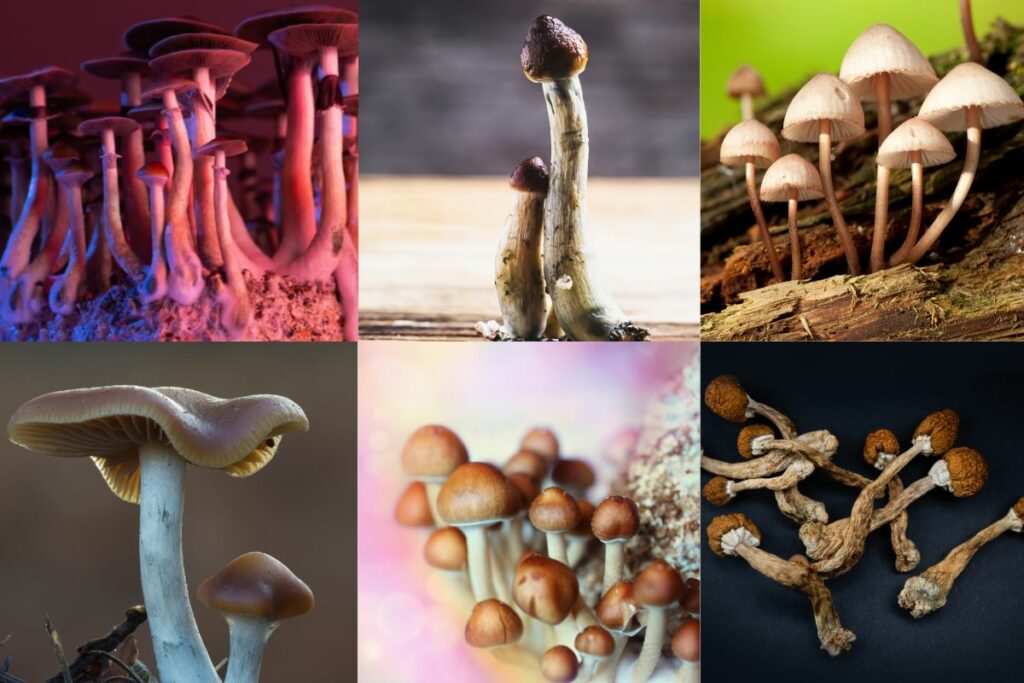
Psilocybe mushrooms, commonly known as magic mushrooms, produce hallucinogenic effects due to their active compounds, psilocybin and psilocin. There are numerous species belonging to this fascinating genus. This section will focus on some of the most well-known species, including Psilocybe semilanceata, Psilocybe cubensis, Psilocybe azurescens, Psilocybe cyanescens, Psilocybe baeocystis, Psilocybe tampanensis, and Psilocybe caerulescens.
- Psilocybe semilanceata, also referred to as the liberty cap, is one of the most widespread and common species. Found primarily in grasslands and meadows across Europe and North America, this species is characterized by its conical-shaped cap and slimy, translucent surface when wet.
- Psilocybe cubensis is possibly the most popular species for consumption due to its widespread distribution and ease of cultivation. Often referred to as the golden teacher, this species is a tropical mushroom that can be found in countries like Mexico, Brazil, and the Caribbean. It is well-known for its golden-colored caps and deep purple spores.
- Psilocybe azurescens, known as flying saucers or blue angels, is a highly potent species native to the Pacific Northwest region of the United States. It is distinguishable by its caramel or chestnut-colored cap and intense bluing reaction when bruised or damaged.
- Psilocybe cyanescens, often called “wavy caps,” is another potent species that also calls the Pacific Northwest home. It features wavy, undulating cap margins and strong blue bruising, making it easily recognizable.
- Psilocybe baeocystis is commonly referred to as the blue bell or bottle cap mushroom, due to its distinctive cap shape. It is native to the Pacific Northwest as well and is relatively potent, displaying strong blue bruising.
- Psilocybe tampanensis is a rare species first discovered in Florida but has since been found in Mississippi. It is unique for its formation of “truffles” or sclerotia, which are hardened structures that store nutrients underground.
- Finally, Psilocybe caerulescens is a species native to Mexico and has a historic connection to native Mazatec rituals. It is one of the first species used by shamanic healer Maria Sabina, who introduced Westerners to the spiritual properties of magic mushrooms.
These famous Psilocybe species showcase the diversity and potency found within the genus. While their use may be rooted in spiritual practices, it is important to understand the potential dangers and legal status associated with their consumption.
Geographical Distribution and Habitat
Psilocybe mushrooms, commonly known as magic mushrooms, are distributed across various regions worldwide. These species thrive in diverse habitats, adapting to the local conditions of their environment, as displayed in the following geographical regions.
In North America, the Pacific Northwest is home to numerous psilocybe species. This region features temperate, moist climates, providing an ideal environment for the growth of mushrooms such as Psilocybe cyanescens, also known as ‘wavy caps,’ and Psilocybe semilanceata, or ‘liberty caps.’
Mexico holds a unique and rich array of psilocybe species. The country’s varying landscapes, which range from tropical rainforests to alpine habitats, make it conducive for diverse psilocybe species to thrive. Some examples of mexican psilocybe species include Psilocybe aztecorum and Psilocybe mexicana.
Moving towards South America, countries like Brazil, Argentina, and Colombia also host a broad range of psilocybe species. These regions experience warm, tropical weather conditions with abundant rainfall, facilitating the development of species such as Psilocybe eucalypta and Psilocybe wrightii.
Australia exhibits a notable presence of psilocybe species, as well. In the cooler and wetter regions of the country, species like Psilocybe subaeruginosa and Psilocybe tasmaniana flourish. These species often prefer damp woodlands, eucalyptus, and pine forests as their habitat.
To summarize, the geographical distribution of psilocybe mushrooms spans continents and diverse habitats. From North America’s Pacific Northwest to Mexico, South America, and Australia, they demonstrate adaptability to various environments. These mushrooms play an essential role in ecological systems and continue to fascinate scientists, making their study an ongoing area of research.
Psychoactive Compounds
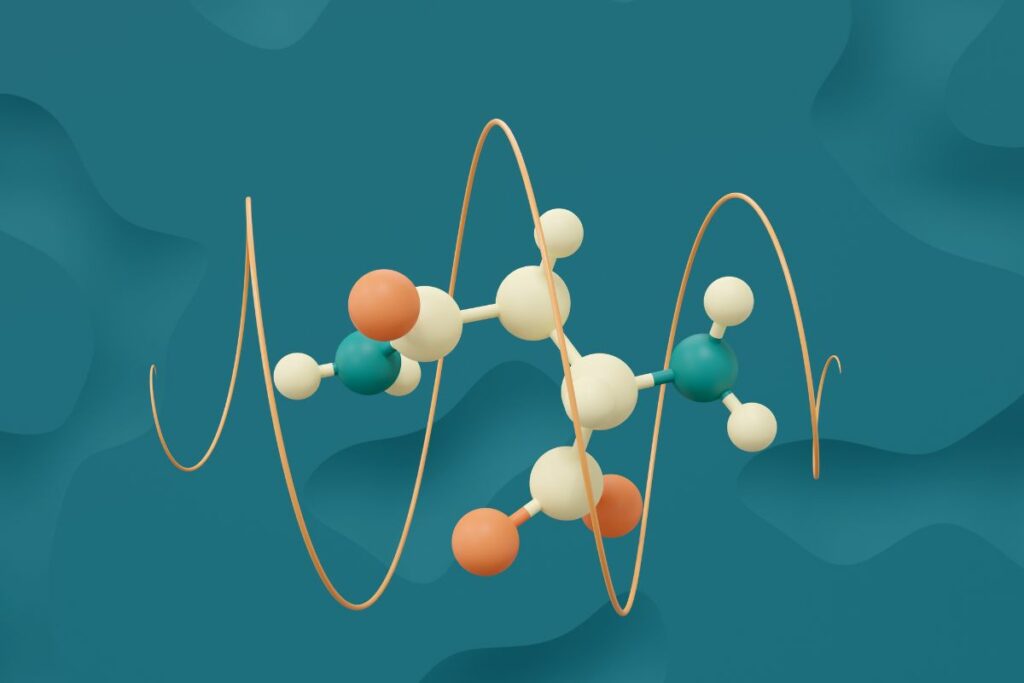
The psilocybe species of mushrooms are well-known for their psychoactive properties, mainly attributed to the presence of several psychedelic compounds within these fungi. The primary compounds responsible for the effects of these mushrooms are psilocybin, psilocin, baeocystin, and norbaeocystin.
- Psilocybin (4-phosphoryloxy-N,N-dimethyltryptamine) is the most abundant and widely studied psychedelic alkaloid found in psilocybe mushrooms. Once ingested, the body metabolizes psilocybin into psilocin, which is responsible for the psychoactive effects experienced during a “magic mushroom” trip. Psilocybin is also notable for its potential therapeutic uses in the treatment of various mental health disorders, such as anxiety and depression.
- Psilocin (4-hydroxy-N,N-dimethyltryptamine) is the primary psychoactive compound responsible for the effects of psilocybe mushrooms. It acts on the serotonin receptors in the brain, leading to the hallucinogenic and introspective experiences often described during a mushroom trip. Psilocin is known to have a shorter duration and faster onset of action compared to psilocybin, due to its direct psychoactive properties.
- Baeocystin and norbaeocystin are two lesser-known compounds found in psilocybe mushrooms, but they also contribute to the overall psychedelic profile of these fungi. Baeocystin, a structural analog of psilocybin, is believed to have psychoactive properties, although its effects are thought to be milder than those of psilocybin and psilocin. Norbaeocystin is another structural analog of psilocybin, but its psychoactive properties have not been well-studied.
In summary, psilocybe mushrooms contain a complex array of psychoactive compounds that contribute to their psychedelic effects. The main compounds, psilocybin and psilocin, are accompanied by baeocystin and norbaeocystin, creating a unique and potent blend of substances that make these mushrooms a powerful source of mind-altering experiences. Careful research and a thorough understanding of their pharmacology are essential for both recreational users and scientists exploring their therapeutic potential.
Effects and Experiences
Psilocybe mushrooms, often referred to as “magic mushrooms,” contain the psychoactive compound psilocybin, which is known to induce a wide range of effects and experiences in those who consume it. The potential effects of psilocybin consumption can vary based on the species of the mushroom, the setting in which it is taken, and individual factors.
Euphoria is a common experience with psilocybin use, often characterized by intense feelings of happiness, well-being, and connectedness to others. This heightened emotional state can be accompanied by perceptual changes, such as synesthesia, where sensory experiences blend together, causing individuals to hear colors or see sounds.
The setting in which psilocybin is consumed plays a significant role in the quality and intensity of the experience. A comfortable and familiar environment, with supportive and trusted individuals present, can help facilitate a positive experience. On the other hand, taking psilocybin in an unsettling or unfamiliar setting can potentially lead to feelings of panic and anxiety.
Nausea is a common side effect of consuming psilocybe mushrooms, and it can range from mild discomfort to more intense symptoms, including vomiting. This adverse effect can be minimized by consuming the mushrooms in a tea or other form that is easier on the stomach.
While the ingestion of psilocybin mushrooms can lead to profound and enjoyable experiences for some, others may experience challenging or adverse effects. Panic and anxiety can manifest during a trip, typically when an individual feels overwhelmed by the intensity of the experience. Additionally, those who have a history of mental health conditions, such as depression or anxiety disorders, may be more susceptible to negative reactions.
In summary, the effects and experiences of psilocybe mushrooms can vary greatly depending on individual factors and the setting in which they are consumed. While euphoria and synesthesia are common positive effects, potential negative outcomes like nausea, panic, and anxiety should be considered as well. To optimize the psilocybin experience, thoughtful planning, and careful consideration of the individual and their environment are crucial.
Use and Significance
Psilocybe mushrooms have been utilized by various cultures for thousands of years for recreational, spiritual, and healing purposes. In particular, many indigenous groups in Central and South America, such as the Mazatecs and the Aztecs, have a rich history of using these fungi as entheogens for various rituals and ceremonies.
As a recreational drug, psilocybe mushrooms typically elicit hallucinogenic and psychoactive effects when consumed. These effects can be attributed to the active compounds, psilocybin and psilocin, found in these mushrooms. The recreational use of psilocybe mushrooms is not limited to the traditional context, as they have become increasingly popular in modern Western societies as well.
In traditional healing practices, psilocybe mushrooms have been used to treat various mental health conditions and induce spiritual experiences. Some indigenous groups even believe that these fungi possess the ability to communicate with spirits and ancestors, adding a significant spiritual component to their use.
The role of psilocybe mushrooms as an entheogen has spurred interest in exploring their therapeutic potential for various mental health disorders, including depression, anxiety, and PTSD. Recent clinical studies have shown promising results, suggesting that psilocybin-assisted psychotherapy can lead to significant reductions in symptoms of these conditions.
In addition to their cultural and spiritual significance in indigenous groups, psilocybe mushrooms have also been employed as important tools for reconnecting individuals to their roots and preserving ancient knowledge. The use of these mushrooms in traditional settings has helped communities maintain their cultural identity and pass down valuable information to future generations.
In conclusion, the use and significance of psilocybe mushrooms are deeply rooted in various cultures’ history and spiritual practices. As modern research continues to explore their therapeutic potential, these fungi may also begin to play a larger role in the treatment and understanding of mental health disorders.
Legal Status
| Jurisdiction | Psilocybe Mushroom Legal Status |
|---|---|
| United States | Generally illegal at the federal level as a Schedule I substance. Some states and cities have decriminalized or reduced penalties for possession and use. Oregon has legalized regulated medical use. |
| Canada | Generally illegal under the Controlled Drugs and Substances Act. Health Canada has granted exemptions for psilocybin therapy and research. |
| United Kingdom | Illegal to possess, produce, or supply psilocybin-containing mushrooms under the Misuse of Drugs Act 1971. |
| Australia | Generally illegal, with some states having stricter regulations than others. Some research and cultivation are permitted for scientific purposes. |
| European Union | Varies by country. Some countries have decriminalized possession, while others have stricter regulations. Psilocybin-containing mushrooms are generally illegal in most EU nations. |
| Netherlands | Fresh psilocybin-containing mushrooms are illegal, but dried mushrooms and truffles containing psilocybin are tolerated and sold in licensed “smart shops.” |
| Mexico | Legal for personal use in small quantities. Some regions have specific regulations, but enforcement can vary. |
| Brazil | Illegal but commonly used, with limited enforcement. Legal challenges and discussions about regulation are ongoing. |
| New Zealand | Generally illegal under the Misuse of Drugs Act. Some exemptions exist for scientific research and medical use. |
| Japan | Highly regulated and illegal. Possession, sale, and use are subject to severe penalties. |
| South Africa | Generally illegal, but there has been debate and discussion about potential decriminalization or legalization. |
The legal status of psilocybe species varies across the globe, depending on local regulations. In many countries, the cultivation, possession, sale, and consumption of psilocybin mushrooms are either illegal or strictly controlled. Some notable regional differences regarding the legality of psilocybe species are as follows:
In the United States, psilocybin is classified as a Schedule I controlled substance, making it illegal to cultivate, possess, or sell psilocybin mushrooms. However, some local jurisdictions, such as Denver, Colorado, and the cities of Oakland and Santa Cruz in California, have decriminalized the possession and personal use of psilocybin mushrooms.
Canadian regulations classify psilocybin as a Schedule III controlled substance, making it illegal to possess, produce, or distribute in most provinces. However, it is worth noting that several companies have received licenses to conduct research to explore the potential therapeutic uses of psilocybin.
In Europe, the legal status of psilocybin mushrooms varies between countries. In the United Kingdom, for example, it is illegal to possess, distribute, or cultivate psilocybin mushrooms, which they classify as a Class A drug. On the other hand, in the Netherlands, psilocybin-containing mushrooms are subject to a legal gray area. The sale of dried mushrooms is illegal, but fresh mushrooms and grow kits can be legally purchased from certain vendors.
Australia has classified psilocybin as a Schedule 9 prohibited substance, making it illegal to possess or sell psilocybin mushrooms. However, there have been efforts to lobby for the use of psilocybin in a therapeutic context, specifically for the treatment of terminally ill patients.
In Mexico, while the cultivation and sale of psilocybin mushrooms are illegal, their traditional use for spiritual and religious purposes by indigenous groups is recognized and permitted.
It is crucial to be aware of the legal status of psilocybe species in your region, as violations can result in severe penalties. While there is a growing interest in the potential therapeutic applications of psilocybin, the use of these substances remains restricted in many parts of the world.
Other Related Fungi Species
Besides the psilocybe species, there are several other fungi species that share similarities and associations, including both psychoactive and poisonous characteristics. Some of these related species are Galerina, Panaeolus, Gymnopilus, Inocybe, Pluteus, Stropharia, and Conocybe. These fungi are found in a variety of environments and have distinct features that distinguish them from the psilocybe species.
- Galerina species are small, brown mushrooms that grow on wood, especially hardwoods. Some of them contain deadly toxins similar to those found in the infamous death cap mushroom, making it essential to exercise caution when foraging for mushrooms in similar habitats1.
- Panaeolus species are characterized by their thin, dark fruiting bodies and dark spores. While a few species within this genus are known to contain psilocybin, it’s important to remember that not all Panaeolus species share this property2.
- Gymnopilus mushrooms are often large, orange to yellow in color, and typically found growing on rotting wood. Some species within this genus contain psilocybin, but they are not as popular or commonly sought after as psilocybe mushrooms due to their bitter taste3.
- Inocybe mushrooms have a distinctive conical or bell-shaped cap, and many species within this genus produce muscarine, a toxic compound that can cause severe gastrointestinal symptoms. As a result, these mushrooms should be avoided4.
- Pluteus species grow on dead wood and feature a wide range of cap colors. Some Pluteus mushrooms contain psilocybin, although they are not as potent as certain psilocybe species. Caution is required, as some poisonous mushrooms may closely resemble Pluteus species5.
- Stropharia mushrooms have a unique feature called an annulus, or partial veil, which protects the developing gills. Some species within this genus are edible, while others contain toxic compounds and are best avoided.
- Conocybe species are small, delicate fungi that usually grow in grassy areas. A few species are known to contain the psychoactive compounds psilocybin and psilocin, but identification can be challenging due to their small size and resemblance to other, potentially toxic, species6.
In summary, while some of these other fungi species may have similarities or associations with psilocybe species, it’s essential to practice caution and proper identification when exploring these mushrooms in nature.
History and Research
The history of psilocybe species, commonly known as magic mushrooms, can be traced back to the indigenous cultures of Central America, where they were often used in religious and spiritual ceremonies. In the mid-20th century, researchers like Gordon Wasson and Timothy Leary brought these potent fungi into the spotlight, sparking a renewed interest in their properties and potential therapeutic applications.
Wasson, an amateur mycologist, played a significant role in introducing the Western world to psilocybin mushrooms. In the late 1950s, he traveled to Mexico and participated in a Mazatec mushroom ceremony led by local healer María Sabina. His experiences and subsequent writings, including a 1957 Life Magazine article, helped popularize these fungi and their psychotropic effects.
Meanwhile, Timothy Leary, a psychologist at Harvard University, became an advocate for the therapeutic use of psychedelics, including psilocybin. Having conducted several clinical trials in the early 1960s, his findings sparked interest in the scientific community to explore the potential benefits of magic mushrooms and other hallucinogens in treating various mental health disorders.
Over the years, more research was conducted on psilocybin-containing fungi. One such study aimed to describe new compounds and applications in psychiatry. This has led to contemporary studies focusing on the pharmacological properties and potential therapeutic uses of psilocybin, particularly in addressing treatment-resistant depression.
A recent example is an open-label feasibility study that examined the efficacy of psilocybin coupled with psychological support for people with treatment-resistant depression. The study showed promising results, further solidifying the potential of psilocybin as a therapeutic agent.
Today, there is a vast body of literature available on psilocybe species and their potential. From their early history in indigenous practices to the work of notable researchers like Gordon Wasson and Timothy Leary, these fungi have captivated the scientific community. As research continues to accumulate, the knowledge surrounding the biology and pharmacological properties of psilocybin mushrooms expands, opening new avenues for their application and exploration in modern society.
Frequently Asked Questions
What are the main differences between various Psilocybe species?
There are many Psilocybe species, and they differ in appearance, habitat, and potency due to varying levels of psilocybin and psilocin, the psychoactive compounds present in the mushrooms. Some common species include Psilocybe cubensis, which is typically found in subtropical regions; Psilocybe cyanescens, known for its wavy cap; and Psilocybe semilanceata, a common species in grassy fields throughout North America and Europe.
Where can Psilocybe cyanescens be commonly found?
Psilocybe cyanescens, also known as “wavy caps,” can be commonly found in the Pacific Northwest region of the United States, particularly in states such as Oregon, Washington, and Northern California. They prefer to grow on wood chips, mulch, and other decaying plant materials.
How do you pronounce the word ‘Psilocybe’ correctly?
The word ‘Psilocybe’ is pronounced as “suh-LOH-suh-bee.” The stress is on the second syllable, and the ‘c’ in the word is pronounced as an ‘s.’
What is the typical size of Psilocybe spores?
Psilocybe spores vary in size, but they are generally small, ranging from 6-12 micrometers in length and 3-7 micrometers in width. Their shape can be ellipsoid, subellipsoid, or rhomboid, and their color ranges from pale to dark brown.
What factors influence the growth and distribution of Psilocybe species?
Several factors influence the growth and distribution of Psilocybe species, including temperature, humidity, lighting, and the availability of nutrients. Psilocybe mushrooms tend to thrive in environments with moderate humidity, temperatures between 60-80°F (15-27°C), and access to decaying plant materials as a source of nutrients.
Where does the name ‘Psilocybe’ originate from?
The name ‘Psilocybe’ comes from the Greek words ‘psilos,’ meaning ‘bare’ or ‘smooth,’ and ‘kube,’ meaning ‘head.’ This is in reference to the smooth, cap-like appearance of the fruiting body of the mushrooms in this genus.
Footnotes
- https://www.redalyc.org/pdf/3092/309226786009.pdf ↩
- https://books.google.com/books?hl=en&lr=&id=tl2fVAHuej4C&oi=fnd&pg=PP8&dq=Other+Related+Fungi+Species+all+psilocybe+species+&ots=Cr2teB6blr&sig=jiuluwhA1shd692vPvqoW108D9E ↩
- https://www.ingentaconnect.com/content/wfbi/sim/2016/00000085/00000001/art00007 ↩
- https://www.sciencedirect.com/science/article/pii/S0379073810003099 ↩
- https://www.sciencedirect.com/science/article/pii/S1080603217302752 ↩
- https://www.redalyc.org/pdf/3092/309226786009.pdf ↩

